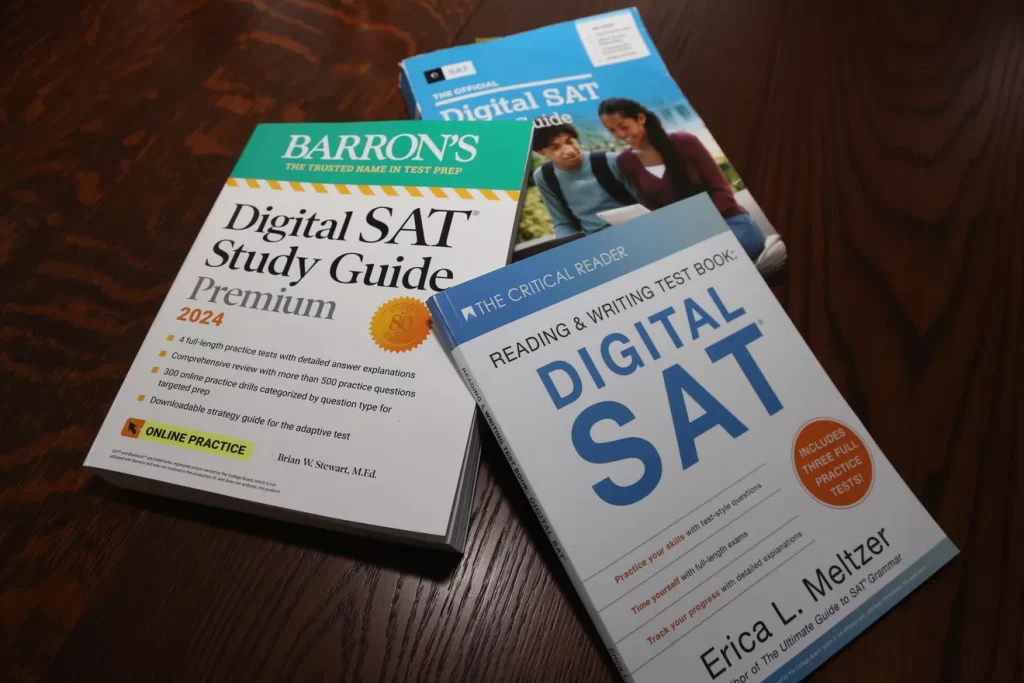WhatsAppCHAT
CALL US& CONNECT

Opting for the SAT or the ACT is a major decision for international students applying to colleges in the US and other countries. The results of these standardized exams are heavily weighted in admissions decisions and are generally recognized by educational institutions. They are similar in that they both aim to determine if a student is prepared to succeed in college, but they are very different in terms of format, content, scoring, and the abilities they look for. Students throughout the world need to be aware of these distinctions so they can choose an exam that plays to their strengths and helps them achieve their academic objectives.

SAT: The SAT and ACT are standardized tests used for U.S. college admissions, both evaluating students’ readiness for college. The SAT emphasizes critical reading, writing, and advanced math, including trigonometry.
ACT: ACT focuses more on grammar, punctuation, and straightforward problem-solving. Both tests cover similar math topics but differ in their approach and structure.
To give institutions a way to compare all of their candidates, the College Board created the SAT to gauge a student’s level of preparedness for college.

The math component and the evidence-based reading and writing section of the SAT each have a score between 200 and 800 on a range from 400 to 1600. The optional essay has a possible total of 12 points, with 2–8 points allocated to each of the three components of reading, analysis, and writing.
The SAT is mainly designed to test your analytical, problem-solving, and critical thinking abilities. Critical thinking, evidence interpretation, and fluency with English language standards are highlighted in the Reading and Writing portions. There is an emphasis on algebra, problem-solving, and data analysis in the Math sections, and students are expected to show that they can apply mathematical ideas to real-world problems.
United States college admissions also heavily utilize the American College Testing (ACT), which is managed by ACT, Inc.

Each of the four components of the American College Testing System (ACT)—English, Math, Reading, and Science—is evaluated independently using a scale ranging from 1 to 36. All four of these scores add up to the composite score. You can choose to take the optional Writing component and get a score between 2 and 12, but it won’t count toward your overall score.
The ACT assesses a diverse set of abilities, including reasoning in mathematics (Math), reading comprehension (Reading), scientific reasoning (Science), and English grammar and use (English). Even though the test moves at a faster speed than others, some students may find the questions to be too easy.
Nearly every school in the United States accepts the SAT or ACT as an admissions requirement, and many more throughout the world do the same. The following is a list of fifteen prestigious schools that recognize and accept the SAT and ACT:
These institutions are among the most prestigious in the United States, and they consider both SAT and ACT scores as part of their holistic admissions processes.
Many schools now have “test-optional” rules that let applicants choose whether to include standardized test results (such as SAT or ACT) in their applications. The COVID-19 pandemic has hastened this trend, which has seen many schools, including those in the Ivy League, embrace test-blind or test-optional policies.
Among the most prestigious schools that have made standardized testing optional are:
· University of California (system-wide)
According to these standards, applicants are not penalized for not submitting test scores, but they might still be asked to provide other materials, including extra essays or graded tasks.
Colleges and universities generally do not have a bias towards one test over the other when considering applicants’ SAT or ACT scores. The admissions staff is familiar with both exams and how to interpret test results within the larger application package. On the other hand, there are small geographical variations; for instance, compared to students on the East and West Coasts, those in the Midwest and South tend to favor the SAT.
To make fair comparisons between applicants who submit various test scores, many universities employ a concordance table that is offered by the College Board and ACT, Inc. This table aligns SAT and ACT scores.
To register for either the ACT or SAT for undergraduate admissions, applicants need to follow separate procedures. Here’s how to register for each:
Everyone has different skills, tastes, and test-taking techniques, so picking one over the other is a personal decision. Here are a few things to think about:
Your strengths and level of comfort with each test’s structure should guide your decision between the SAT and the ACT. Your result on both examinations will have a major influence on your college admissions application, as they are essential parts of the process. Before deciding, it’s a good idea to take practice exams for both the SAT and the ACT. Then, compare your results and pick the exam that best reflects your abilities and your aspirations for college. No matter which exam you end up taking, getting ready for it in advance and planning your strategy can help you do your best and increase your chances of getting into the school of your dreams.

Sunday, October 26, 2025 | The Taj MG Road, Bangalore | 10 AM – 4 PM